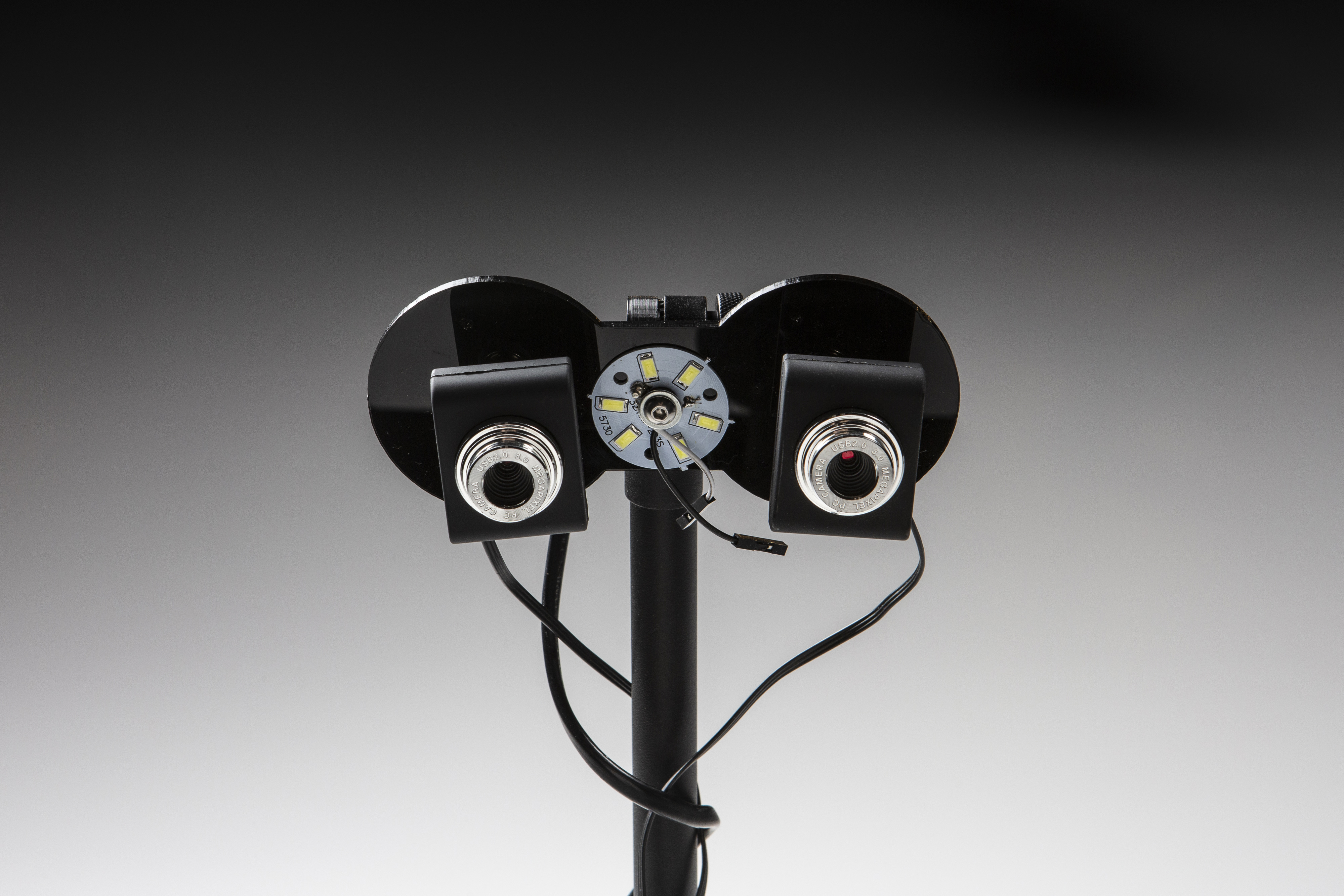
AI-powered robot reads novels and writes poetry
A new series of books by Karen ann Donnachie and Andy Simionato each carry a cautionary label: ‘Warning! This book was not designed by humans.'
Well, the originals were.
The new versions though - featuring Haiku poetry and eerily cute images where the text once sat - were autonomously generated by Artificial Intelligence.
Donnachie and Simionato’s reading machine - on display at the Melbourne Art Book Fair in March - uses computer vision and optical character recognition to ‘read’ books.
It then uses machine learning and natural language processing to select a poetic combination of words on the page to form a Haiku, while erasing all other words.
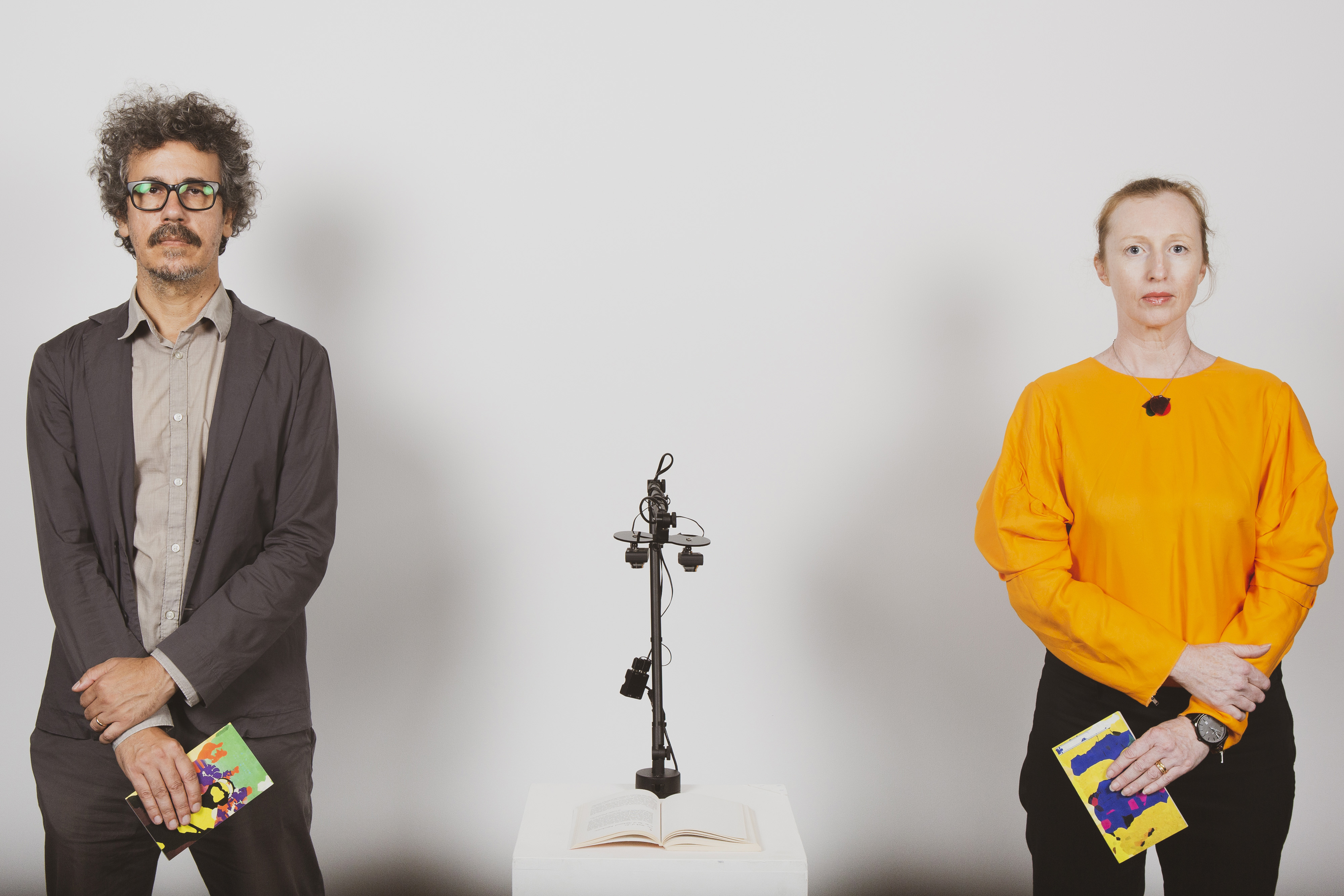 The RMIT creative duo's AI-powered reading machine reconstructs novels as Haikus. Image: Peter Clarke
The RMIT creative duo's AI-powered reading machine reconstructs novels as Haikus. Image: Peter Clarke
Next, the machine searches Google Images for an image to match the text and sends itself off to an online printing service. Creation complete.
They’ve given this treatment to more than a dozen books already, from Margaret Atwood’s The Handmaid’s Tale to Truman Capote’s Breakfast at Tiffany’s.
Even E.L. James’ 50 Shades of Grey has been recreated by the machine, saucy images and all.
The resulting illustrated Haiku versions of each book fill the creative duo’s weird and wonderful Library of Nonhuman Books.
The results are sometimes puzzling, often cute or even hilarious, and at times profoundly poetic.
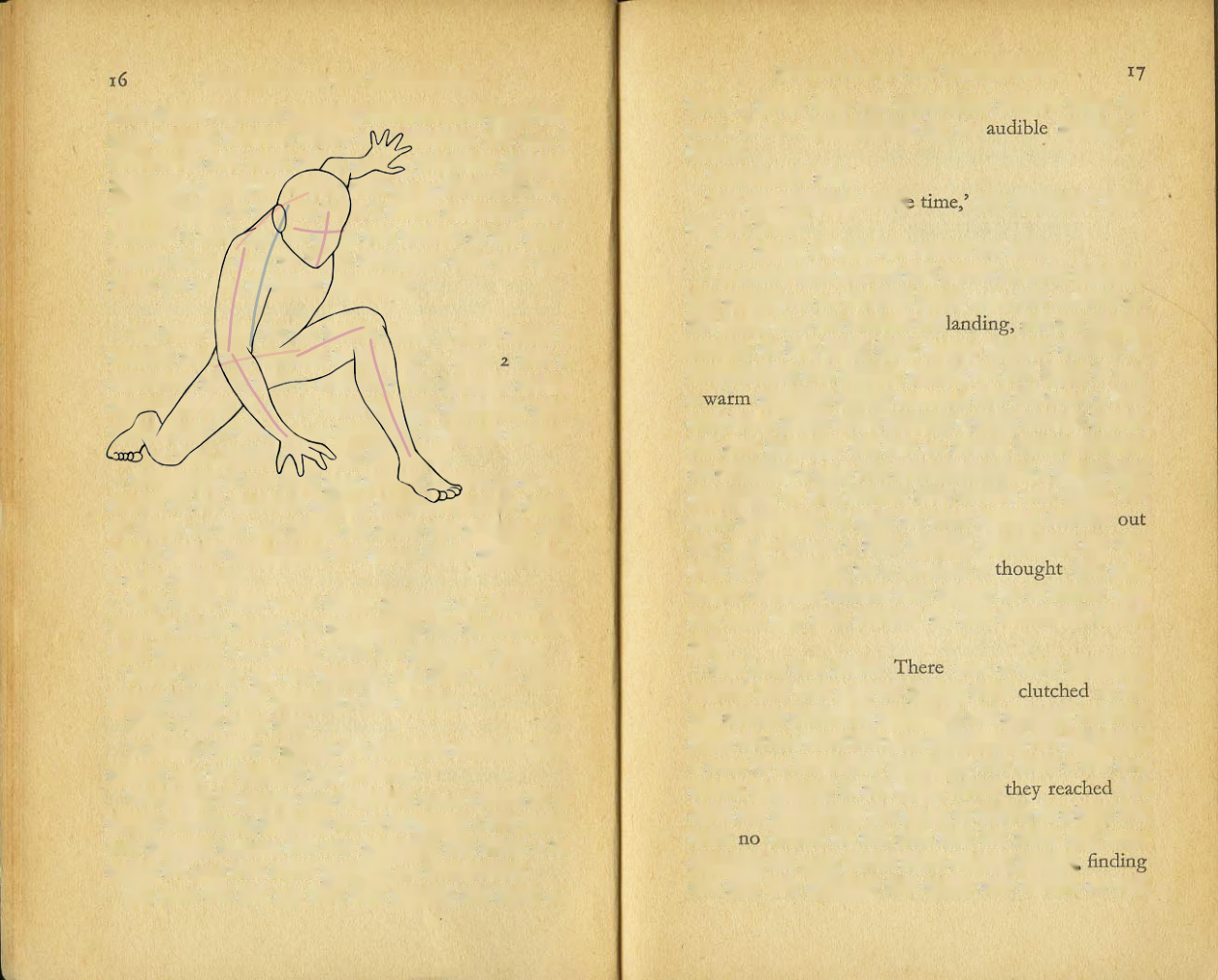 The reading machine's take on pages 16-17 of Truman Capote's Breakfast at Tiffany's.
The reading machine's take on pages 16-17 of Truman Capote's Breakfast at Tiffany's.
Donnachie and Simionato carry their books with them, each with abundant post-it notes hanging out from pages where the AI machine has nailed it.
“We run several versions of each book and they always produce different results,” says Simionato.
“Each formulation unlocks new puzzles and combinations that have always been there but which we could never see.”
It makes you stop and ask – who wrote this? Was it Capote, or was it the machine?
Then on page 55 of Breakfast at Tiffany's, as if in revelation: "who printed above/ I Grossman,/ greasy dissected twin"
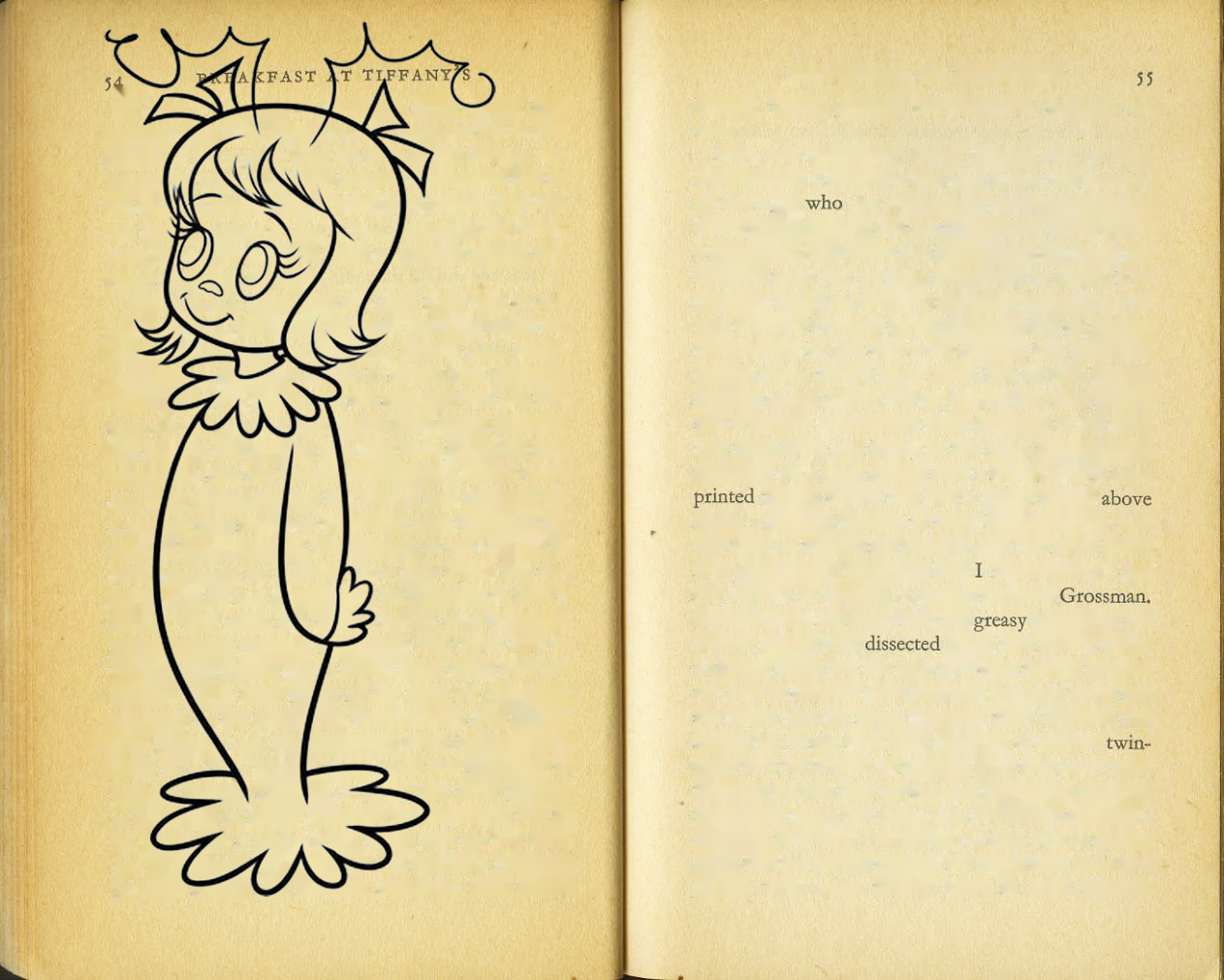 The reading machine's take on pages 44-45 of Truman Capote's Breakfast at Tiffany's.
The reading machine's take on pages 44-45 of Truman Capote's Breakfast at Tiffany's.
The creative pair finish each other’s sentences and laugh out loud in a crowded café as they flick through their mad creations - clearly enjoying this latest venture - but their mission has a serious side.
They want people talking about poetry in the age of AI.
"This, really, is our attempt to grapple with the future of the book, an object we’ve had around us for so long and that’s so central to many cultures, that’s changing so fast," Donnachie says.
“How the written word, and culture more broadly, is produced and read has now shifted so profoundly with social media shorthand, memes, emojis and AI summarizing massive amounts of text on our behalf every day.”
“So what does the creative process of poetry look like in that context?”
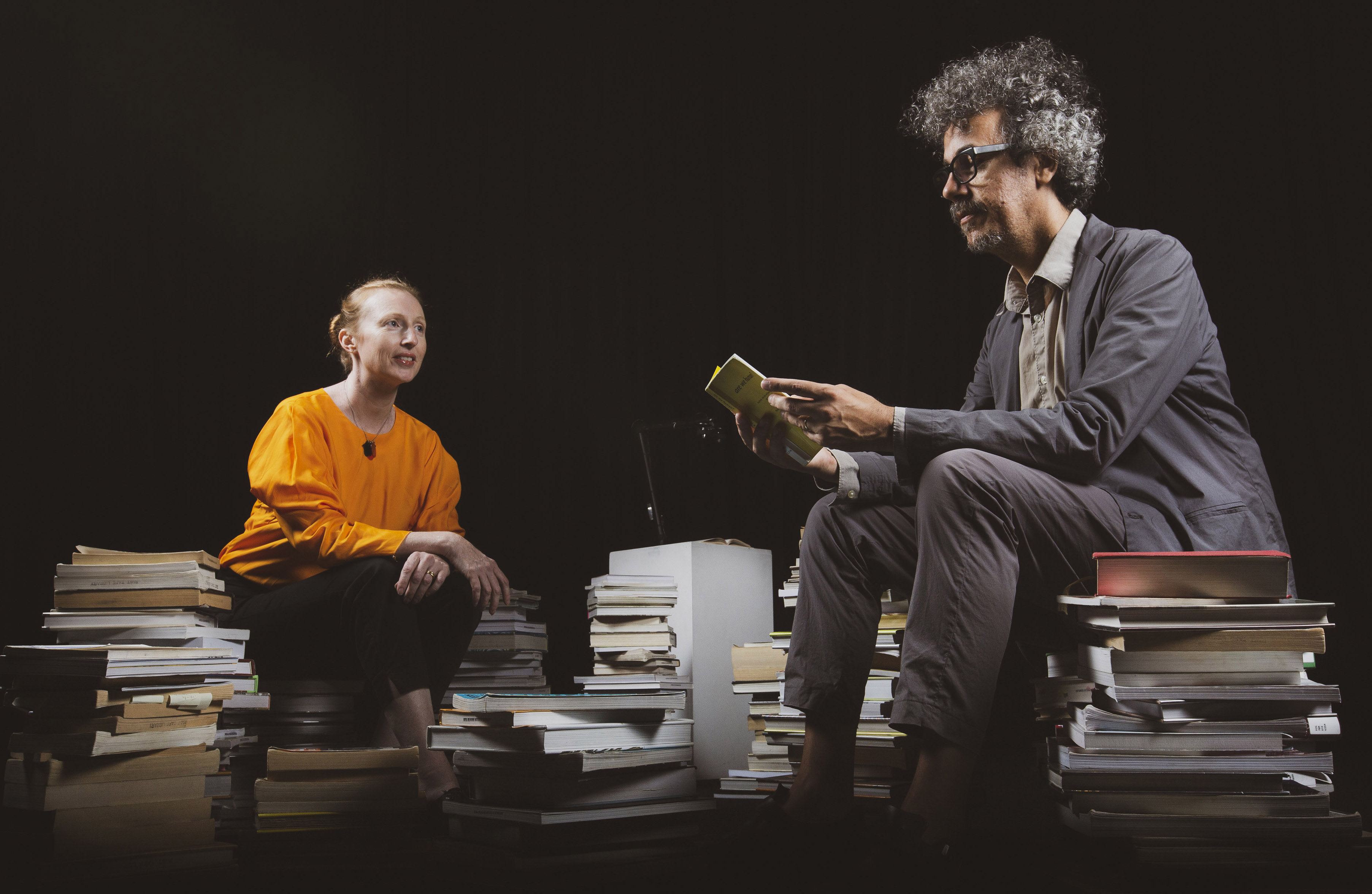 Karen ann Donnachie and Andy Simionato are interested in the future of the book as content creation and consumption radically changes. Image: Peter Clarke
Karen ann Donnachie and Andy Simionato are interested in the future of the book as content creation and consumption radically changes. Image: Peter Clarke
And what about imperfection and chance in a world increasingly mediated by deterministic algorithms?
Simionato says embracing chance is a choice, and one where exciting creative friction has always been.
“It’s important to remind ourselves that chance and imperfection have always been what makes us human and what often delights us in art,” he says.
“We embrace uncertainty and this demonstrates one way that we can make our technology do that too. It’s a choice.”
In April, the pair will receive the Tokyo Type Directors Club award for the project.
It's an award they also received last year for The Trumpet of the Swan - a robotic writing machine that automatically inscribes every tweet published from the @realDonaldTrump Twitter account onto a continuous roll of archival paper in cursive script.
 'The Trumpet of the Swan' by Donnachie, Simionato and Trump took out the Tokyo Type Directors Club award in 2019.
'The Trumpet of the Swan' by Donnachie, Simionato and Trump took out the Tokyo Type Directors Club award in 2019.
Simionato lectures in RMIT's School of Architecture and Design and Donnachie lectures in RMIT's School of Art.
The Library of Nonhuman Books reading machine will be on display at the Melbourne Art Book Fair from March 13 to 15 at the National Gallery of Victoria.
Story: Michael Quin
- Research
- Arts and culture
- Science and technology
- Society
- Design
Related News


Acknowledgement of Country
RMIT University acknowledges the people of the Woi wurrung and Boon wurrung language groups of the eastern Kulin Nation on whose unceded lands we conduct the business of the University. RMIT University respectfully acknowledges their Ancestors and Elders, past and present. RMIT also acknowledges the Traditional Custodians and their Ancestors of the lands and waters across Australia where we conduct our business - Artwork 'Sentient' by Hollie Johnson, Gunaikurnai and Monero Ngarigo.
More information